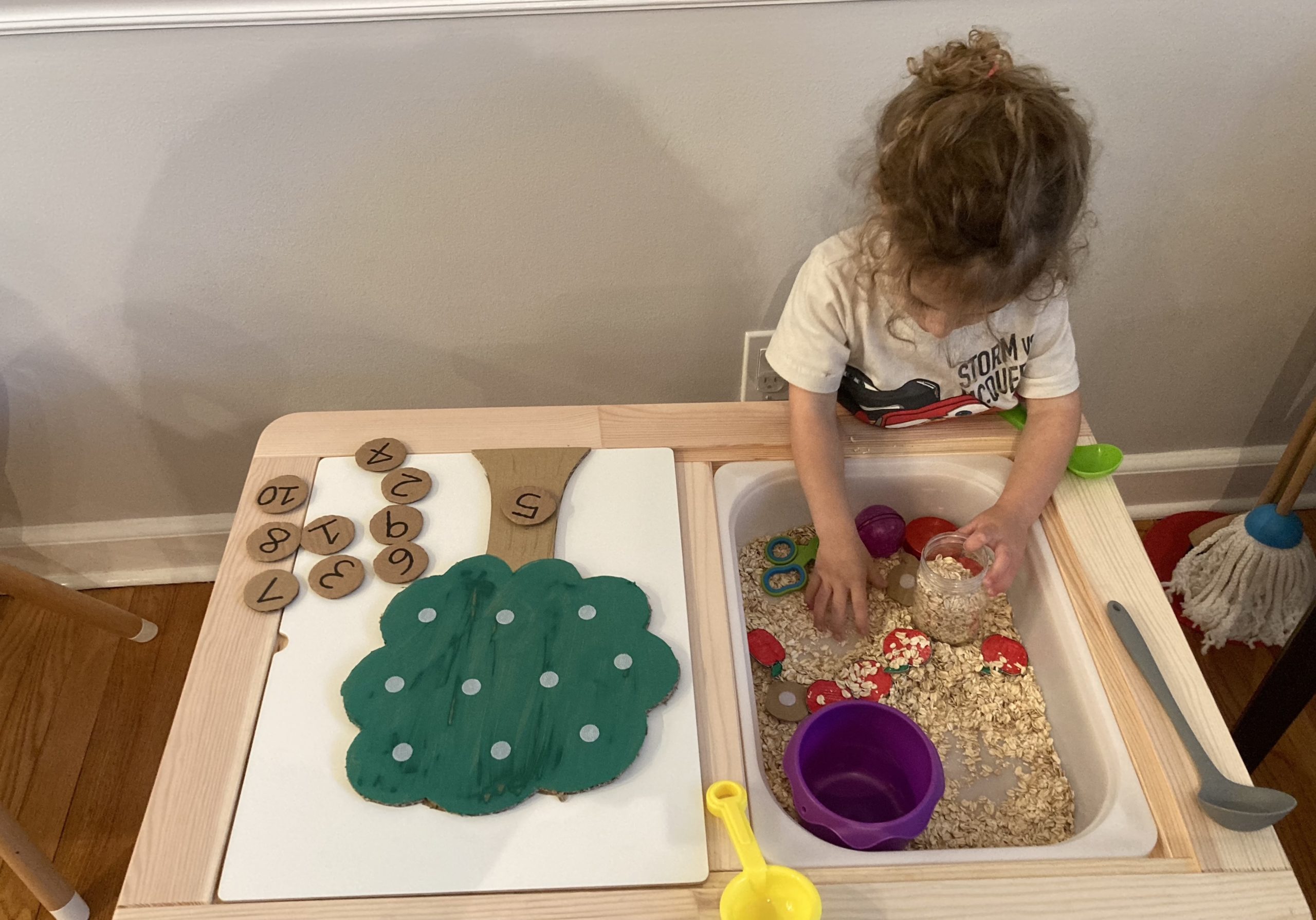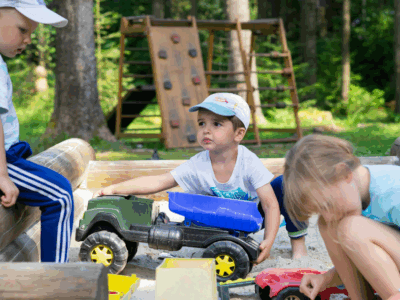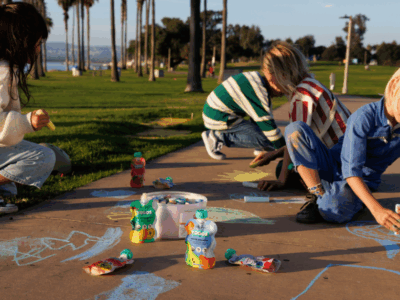Sensory play can be a very rewarding experience for your child and it can be adapted to work with a variety of different ages. While your child’s mind is developing, much of what they learn is absorbed through their senses. As Dr. Maria Montessori says, “The senses, being explorers of the world, open the way to knowledge.” The feel of the rough bark on a tree, the sounds of a bird chirping in the woods, or even the feel of raindrops coming down from the sky. While these things may not seem significant to us as adults, to our children they are a new and exciting way to develop an understanding of the world around them.
Yet the idea of sensory play can be daunting! The beautiful setups you see on Pinterest, the absolute mess your child makes, and the never ending clean up are enough to deter even the most excited caregiver. So, how can we implement sensory play and not get overwhelmed? First, it’s important to remember that your setup does not have to be perfect, nor does it have to be exactly as someone else imagines it.
Sensory play can get very messy. Your child may toss it on the floor to see what happens. While this can be incredibly frustrating, children do this as they are developing a schema or constructing meaning in what they are doing. If it helps, you could think of it as a way to develop an understanding of cause and effect relationships. So, embrace the mess! Prepare for it and, whenever possible, take your sensory play outdoors. This will allow you to keep the “No” or the “Don’t do that” to a minimum and encourage your child to explore freely.
As you begin to explore what types of sensory play you may want to introduce to your child, here are some of my fall favorites for this upcoming season:
Frozen Colored Leaves
Sensory play does not need to cost you a ton of money. You can set up an engaging sensory activity with just about anything you have at home or laying around your yard. For this activity I took a variety of different colored leaves we collected in the backyard, ripped them up and stuffed them into a muffin tin. Then I filled it with water and froze it overnight. Next, set them out in a bin with some warm water and some sensory tools i.e spoons, hammer, pitchers, pipet or tweezers and your child will have a sensory feast, from the cold feeling of the frozen leaves and the warm water. They will also be working on their fine motor development using the provided tools to pick the leaves out of the ice.
Pumpkin Play Dough Decorating
Play dough happens to be a sensory favorite of mine. There are endless ways to play with it. Make a pumpkin using orange and green play dough, then offer your little either pumpkin seeds or a variety of beads, rocks, googly eyes for them to push into the play dough. This activity is great for fine motor development, using those finger muscles to push everything into the play dough.
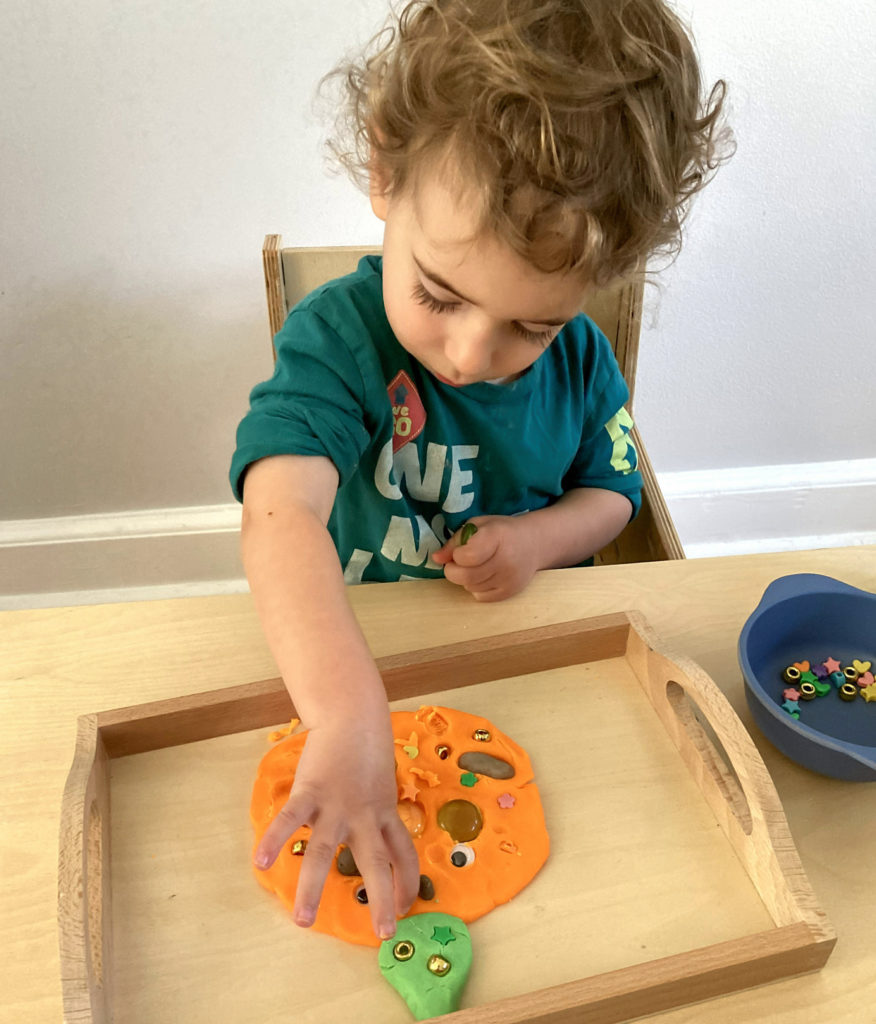
Monster Soup
Water play is always a go-to activity in our house. It’s easy to clean up (especially if it’s outside) and is so easy to set up. For this activity, I took some googly eyes and ping pong eyeballs and added them into a shallow bin with water and a few drops of green food coloring. Then I set out some scooping tools and containers and let my son take it from there. Note: If you do not have tools that you specifically use for sensory play, you can use items right from your kitchen.
Jack-O-Lantern Sensory Bag
Sensory bags are a great way to explore for little ones that are still mouthing everything. It allows you to present items that are not taste safe or are choking hazards at a younger age. If you plan on carving a pumpkin this year don’t throw away the insides. Put them into a freezer bag and seal the bag with packing tape (this will keep spills from happening and keep your little ones from getting to what’s inside). Then use a permanent marker and give your Jack-O-Lantern a face. Let your littles squish the jack-o-lanterns face or try to pinch at the seeds inside. This will allow them to have a stimulating sensory experience in a way that is safe all while working on key development skills like fine motor development.
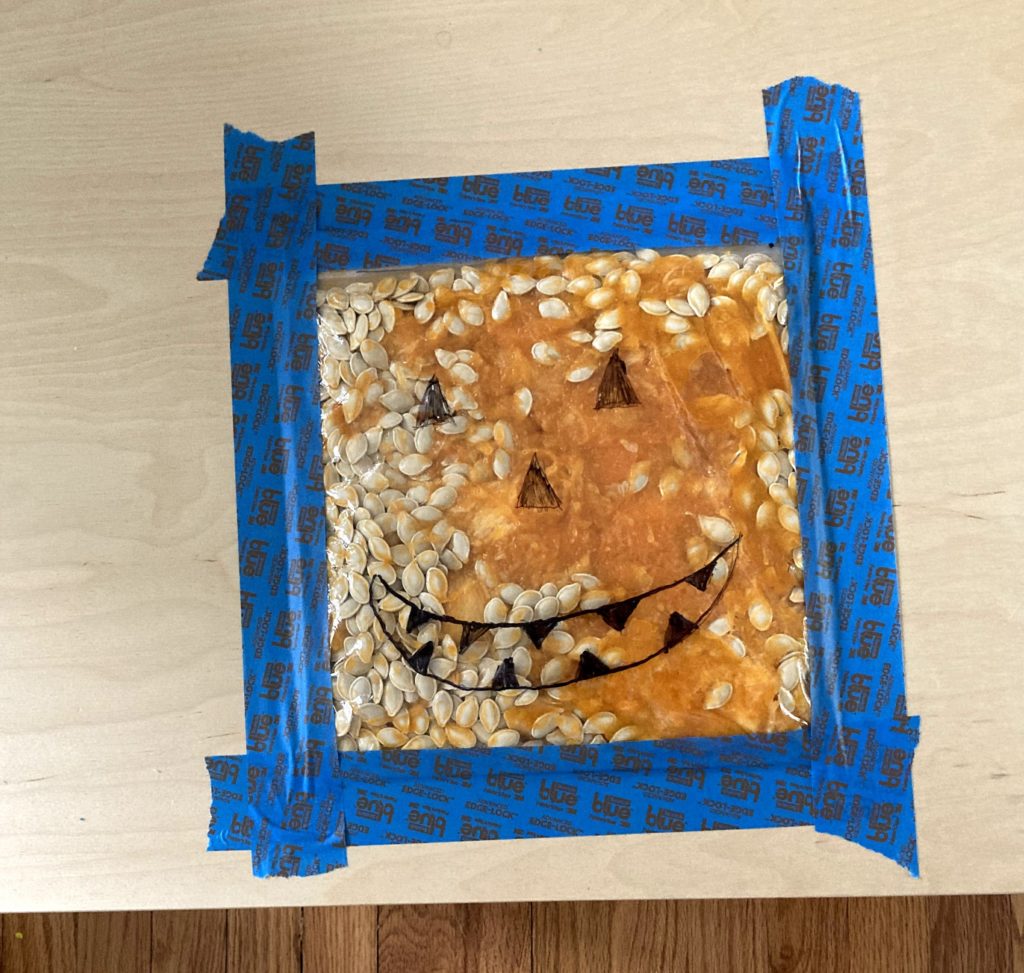
Hammer The Pumpkin
Is your child into smashing things? If so, don’t try to stop it! Instead, embrace it with this simple activity. You can use a real pumpkin or a styrofoam pumpkin for this. I prefer a styrofoam pumpkin so I can reuse this activity over and over again throughout the fall season. Simply stick some golf tees into the pumpkin and invite your child to try to hammer them into it.
Smash The Pumpkins
If your child enjoyed the hammering activity, I’m sure this one will be a hit also. Roll your play dough into balls and add a green stem to make it look more like a pumpkin. Then give your child either a hammer or potato masher and let them smash away.
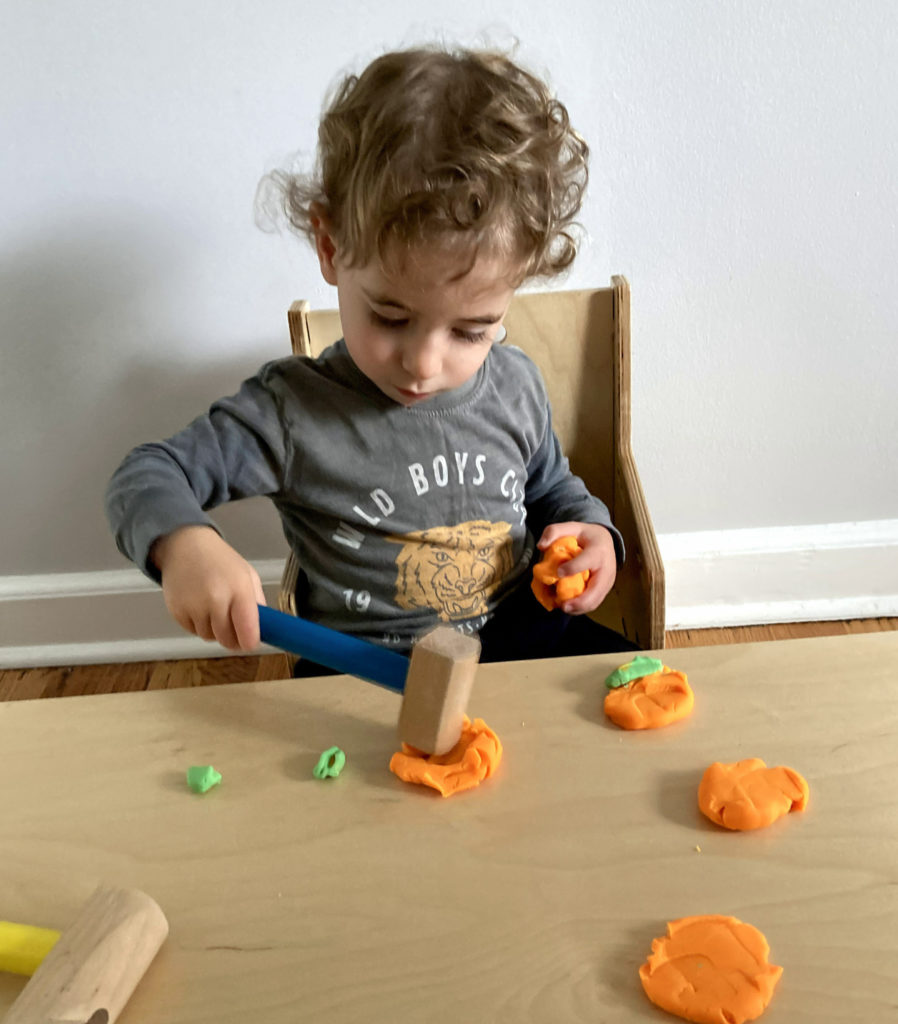
Spider Web Animal Rescue
Animal rescue activities are among my favorite activities for two reasons. First, they always seem to engage my son while working heavily on his fine motor development and second, they are so easy to set up. Take some small animal toys and some decoration spider webs and start by spreading out your spider web either on the floor, across a table, on the grass or bush outside and tangle up your animals. Encourage your kids to help save the animals caught in the spider’s web.
Fill The Jack-O-Lanterns
Children love scooping and dumping things out, and with this sensory bin they get to do just that while transforming clear jars into jack-o-lanterns. All you need is some orange-dyed rice or a natural orange grain like lentils of split peas and a few jars. Using a permanent marker draw your jack-o-lantern faces on the jars. Set it out with some scooping tools and your kids will have a blast filling the jars up.
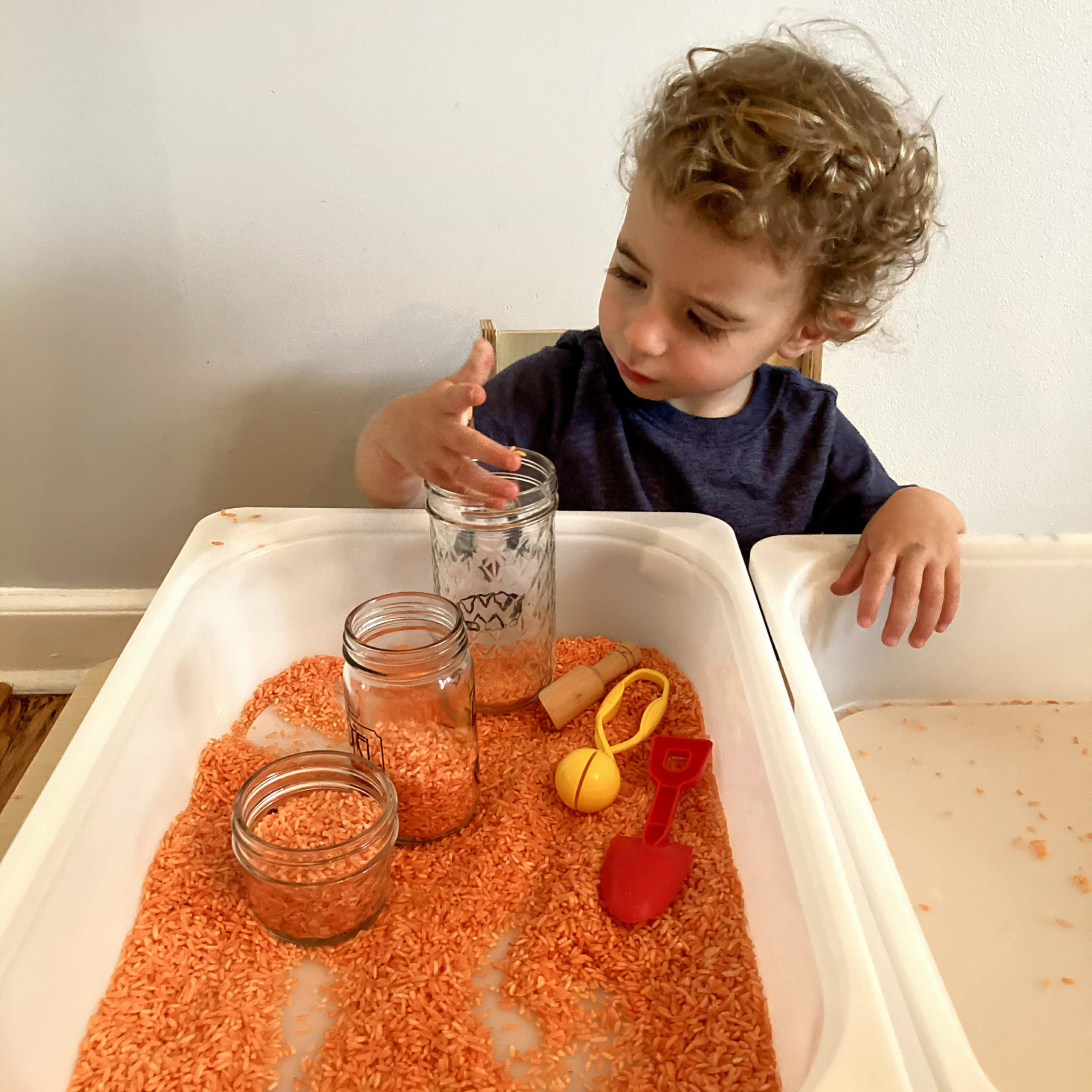
Apple Picking Sensory Bin
This one takes a little more effort for the parents to create this activity. Start by cutting out an apple tree, apples and numbers out of cardboard and paint desired colors. Then use velcro dots for your kids to be able to attach the apples onto the tree. Set the apples in your sensory bin with your desired filler (I used dried oats for a taste-safe option although it doesn’t taste good to them.) Let them scoop, pour and put apples on the tree. Adding this activity to your sensory bin will add to the fun. Instead of this just being a counting activity it becomes a way for your child to play and have fun all while learning their numbers without them even realizing it.
